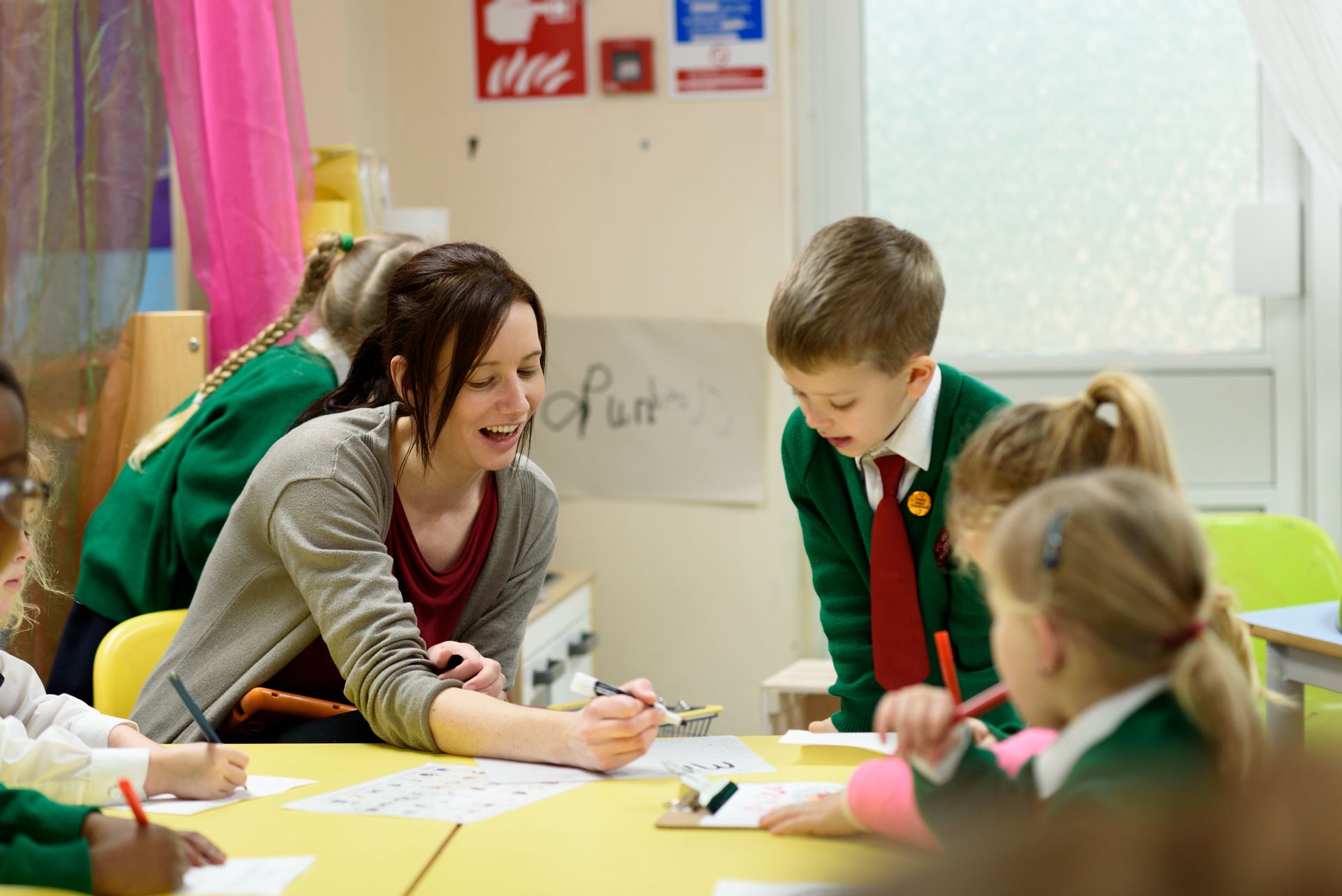PHONICS
|
The Read Write Inc Phonics programme Learning to read is the most important thing your child will learn at our school. Everything else depends on it, so we put as much energy as we possibly can into making sure that every single child learns to read as quickly as possible. We want your child to love reading – and to want to read for themselves. This is why we put our efforts into making sure they develop a love of books as well as simply learning to read. How will my child be taught to read? All children in Key Stage 1 have daily phonics sessions, beginning with simple sounds and building up to more complex sound combinations. This means that they learn how to ‘read’ the sounds in words and how those sounds can be written down. This is essential for reading, but it also helps children to learn to spell well. We teach the children simple ways of remembering these sounds and letters. The children also practise reading (and spelling) what we call ‘tricky words’, such as ‘once,’ ‘have,’ ‘said’ and ‘where’. We call these ‘Red words’ because they cannot be phonetically sounded out. The children practise their reading with books that match the phonics and the ‘tricky words’ they know. They start thinking that they can read and this does wonders for their confidence. The teachers read to the children, too, so the children get to know all sorts of stories, poetry and information books. They learn many more words this way and it also helps their writing.
|
What can I do to help? Is there anything that I shouldn't do? In the Spring term we plan to hold a workshop so that we can show you how we teach reading. Please come and support your child. We would very much like you to know how to help. Your child will bring different sorts of books home from school; a reading book to practise at home and a library book to either read alone or share with you. Help your child to sound out the letters in words and then to ‘push’ the sounds together to make a whole word. Try not to refer to the letters by their names. Help your child to focus on the sounds. You can hear how to say the sounds correctly in the video above. Sometimes your child might bring home a picture book that they know well. Please don’t say, ‘This is too easy.’ Instead, encourage your child to tell you the story out loud; ask them questions about things that happen or what they think about some of the characters in the story. We know parents and carers are very busy people. But if you can find time to read to your child as much as possible, it helps him or her to learn about books and stories. They also learn new words and what they mean. My child has difficulty pronouncing some sounds. Will this stop him learning to read through phonics? This isn’t a problem for learning to read as long as we know what sound the child is trying to say. This is not something to worry about. Many children have a few sounds that they can hear clearly but find it difficult to say, particularly the l-sound, r-sound, w-sound, th-sound, s-sound, sh-sound and j-sound. Often they say a t-sound for the c-sound; "tttssh" for the s-sound; "w" for the r-sound and "r" for the l-sound. You can help your child by encouraging him or her to look at your mouth when you say the sound. Whatever you do, do not make your child feel a failure. They can easily learn to read, even if they find one or two sounds difficult to say. This is what phonics set children should be accessing in each year group Set 1 - Reception Set 2 & Set 3 - Year 1
If your child is finding phonics tricky, please know that we will be doing everything we can to help them at school. To help your child at home you can read with them every night, and this will help them become confident recognising sounds and blending words. Don’t hesitate to contact us if you have any concerns. We are here to help.
Read Write Inc. Manager |





